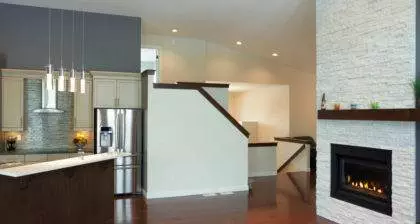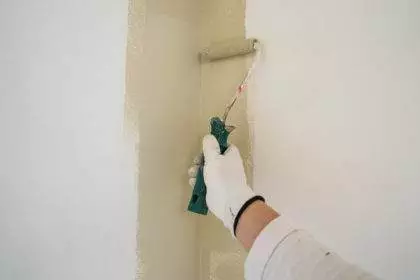Popcorn Ceilings

Popcorn Ceilings in Newton, MA
The heyday of popcorn ceilings was a thirty-year stretch of time between the late 1950s and the early 1980s. All over the country, the rough popcorn (or cottage cheese) texture was advertised to customers as insulating, “acoustic” ceiling material, and, indeed, its soundproofing qualities made it popular with homeowners in hallways, kitchens, bedrooms, and bathrooms in new constructions between the ’50s and the ’80s. As a construction material, it also provided builders with an inexpensive, easy-spray solution that masked poor handiwork, stains, and structural cracks.
Popcorn Ceilings & Danger of Asbestos
Popcorn ceilings, rather unfortunately, came into vogue prior to the banning of asbestos in 1977 (as well as before, some might say, the advent of good taste). It’s the asbestos (and, after 1977, the Styrofoam) that gives popcorn ceilings their distinctive appearance. If your house was built with popcorn ceilings before 1977, then there’s a decent chance that you’re living just under material that the EPA has declared a toxic health hazard. If you’re living in a house with popcorn ceilings, you should get a sample from it tested before either painting it or having it removed. Many of the homes in Newton, MA have popcorn ceilings. The safe removal of asbestos can be an extensive, messy process; it’s a job best handled by either the most serious and dedicated DIY-ers or by a professional, who can provide you with a seamless finish and can remove the hassle and strain of going it alone.
Cleaning Popcorn Ceilings
Aside from the dated look of a home with popcorn ceilings, you may also notice that cleaning them is nearly impossible, patching them up is no cakewalk, and they damage easily. If you’re doing the job yourself, you really have two options: remove the texture by scraping it off, or install new drywall over the existing ceiling. If you live in the Newton or Greater Boston area, it’s best to call a professional painter to take care of your popcorn ceilings.
Should you go with option one (scraping), you’ll need a spray bottle, a scraping tool, and plenty of plastic sheeting. Be prepared now for a horrendous mess: cover your walls, cover your floor, move the furniture. Mix a little soap in with the water in your spray bottle and begin spraying in 5-by-5 foot sections on the ceiling. Don’t over-spray: you’re just trying to soften the textured material; you’re not trying to damage the drywall under it. So let the moisture absorb for five or ten minutes, give it another light spray, and then begin scraping. Be advised that the ceiling underneath your popcorn might look a little unsightly before you patch, sand, and paint it.
If, however, you go with option two (drywalling over your popcorn ceiling), you’ll need a stud finder to find the joists in your ceiling. After doing that, you can begin hanging lightweight drywall over the ceiling, though you will need to do finishing work (taping, mudding, sanding) to prep the new ceiling for paint. Aside from saving you the mess of scraping off the old ceiling, option two also helps protect your family from the risks of asbestos. Of course, the safest bet is to work directly with a professional painter.
Professional Painter To Remove Popcorn Ceilings
In any case, if you want to assure a successful transition from your popcorn ceiling to something more modern, sleek, and aesthetically pleasing, your best bet is to hire a professional Massachusetts painting company. Contact Tom Curren Companies for a consultation on your popcorn ceilings or other remodeling needs.
READ OUR
Related Articles
Locations






